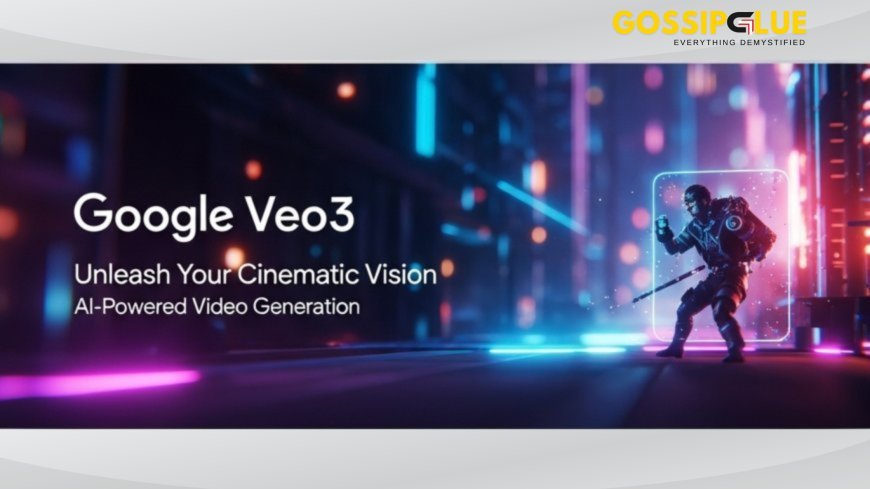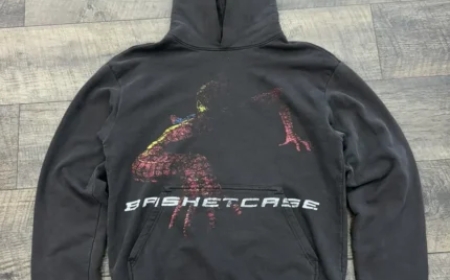How Google’s Veo 3 Could Transform Content Creation for YouTubers and Filmmakers
Discover how Google’s Veo 3 is reshaping content creation for YouTubers and filmmakers, with powerful AI video tools and cinematic-quality results.

A few years ago, if someone told you that you could type a sentence and get a full cinematic video in return, you'd probably laugh it off as sci-fi. Fast forward to Google I/O 2024, and here we areVeo3, Googles most advanced AI video generator, is turning that fantasy into a working reality.
As someone whos dabbled in video editing (and spent countless late nights wrestling with timelines in Premiere Pro), I was honestly floored watching Veo3s capabilities. This isnt just a new appits a tectonic shift in how we think about content creation, especially for YouTubers, indie filmmakers, educators, and anyone trying to make high-impact visuals without a Hollywood budget.
Lets dive into why Googles Veo3 might just be the creative sidekick we've all been waiting for.
What Is Veo3 and Why Should You Care?
If you missed the announcement at Google I/O 2024, heres a quick refresher. Veo3 is Googles latest generative AI video model, capable of producing high-definition, 1080p+ cinematic videos from just a simple text prompt. We're not talking clunky, animated renderingsthis is smooth, realistic motion with depth, lighting, and framing that actually feels like film.
The phrase Veo3 Googles most advanced AI video tool isnt just marketing spin. It really is a leap ahead of earlier video AIs. Think OpenAIs Sora or RunwayML, but with more precise control, longer video duration, andthis is a big onemore understanding of cinematic language.
Whether you're a solo YouTuber or a filmmaker building your next short, this changes the game.
The Magic of Prompt Engineering in Veo3
One of the most exciting aspects of working with Veo3 is how it leans heavily into prompt engineeringthe art of crafting your text input to get the perfect AI output. Its not unlike directing a real shoot. Instead of shouting action, you're typing something like:
A wide shot of a girl riding a bicycle through a foggy forest at dawn, cinematic lighting, depth of field.
And boomVeo3 generates it.
The more you learn how to talk to the model, the better your results. Its like learning a new creative languageand for content creators, thats both empowering and fun. It's also quickly becoming one of the most important AI trends of the year.
Why YouTubers Should Be Paying Attention
Lets be real: not every YouTuber has a drone, a DSLR, and a budget for actors. Many are working with green screens and stock footage, trying to create magic on a laptop in their bedroom.
With Veo3, the production value bar just got obliterated.
You can now illustrate a story, set a scene, or build a visual worldall from text. Want a medieval castle, a futuristic cityscape, or a desert chase scene? You got it.
Its a dream for:
- Explainers and narrators: Generate custom visuals instead of relying on B-roll.
- Storytellers: Animate your short stories with professional-grade clips.
- Vloggers and educators: Add compelling intros, transitions, or metaphorical scenes without ever leaving your chair.
And the best part? It massively cuts down on production time.
Filmmaking Without Borders (or Budgets)
Remember when indie filmmakers needed thousands just to shoot a short? Locations, permits, actors, crewit adds up. Veo3 slashes those barriers.
Imagine creating a full sci-fi scenecomplete with starships and galactic battleswithout touching a 3D render or VFX software. Googles AI has given creators a tool that could rival big studio aesthetics with a fraction of the effort.
And its not just for fantasy. You can experiment with tone, lighting, compositionall the storytelling essentialswithout needing physical gear.
That kind of freedom isnt just cool. Its revolutionary.
AI in Education: Veo3's Unexpected Power Tool
Here's where it gets even more interesting: AI in education is also getting a boost from Veo3.
Teachers and educators are using it to create visual learning aids that were previously out of reach. Imagine a history teacher showing a dramatized Roman battle, or a science instructor illustrating the water cycle as a cinematic time-lapse. No expensive animation studio needed.
Veo3 enables dynamic visual storytelling that holds students attentionand boosts understanding. Thats a big win for classrooms, especially those without access to high-end tech.
But WaitWhat About Veo Cost?
Right now, the Veo cost isn't publicly available since it's in limited access (available to select creators via Google Labs). But if we follow the trajectory of other AI tools, we can expect tiered pricing modelslikely based on render resolution, video length, and storage.
And let's face it: even if the pro-tier gets pricey, the time and resources it saves could more than justify the investment for content creators serious about quality.
Google is also hinting at possible integrations with YouTube and Workspace in the futureso we may see Veo3 baked directly into creator tools soon.
The Bigger Picture: Where Veo3 Fits into AI Trends
The launch of Veo3 isnt happening in a vacuum. Its part of a larger AI video movement, where creative tools are becoming more accessible, intuitive, and powerful.
As generative media evolves, we're entering a world where:
- Creativity is no longer bottlenecked by equipment.
- Storytelling becomes democratized.
- Prompt engineering becomes a must-have skill.
- AI-generated content sits comfortably alongside human-made art.
For anyone exploring a career in IT, media, or digital storytelling, now is the time to pay attention. These tools arent just flashy toystheyre shaping the future of how we create and communicate.
Final Thoughts: It's Time to Embrace the Shift
Whether you're a hobbyist, a filmmaker chasing your first viral hit, or a teacher trying to connect with your studentsVeo3 is an opportunity.
Yes, its powerful. Yes, it still has some kinks (all new tech does). But if you learn how to use it smartly, it can amplify your voice in ways that were unimaginable just a year ago.
So dont wait for the industry to catch up. Explore, experiment, and start building your own cinematic AI content.
Because the future of video isn't just in studios anymoreit's in your prompts.
































